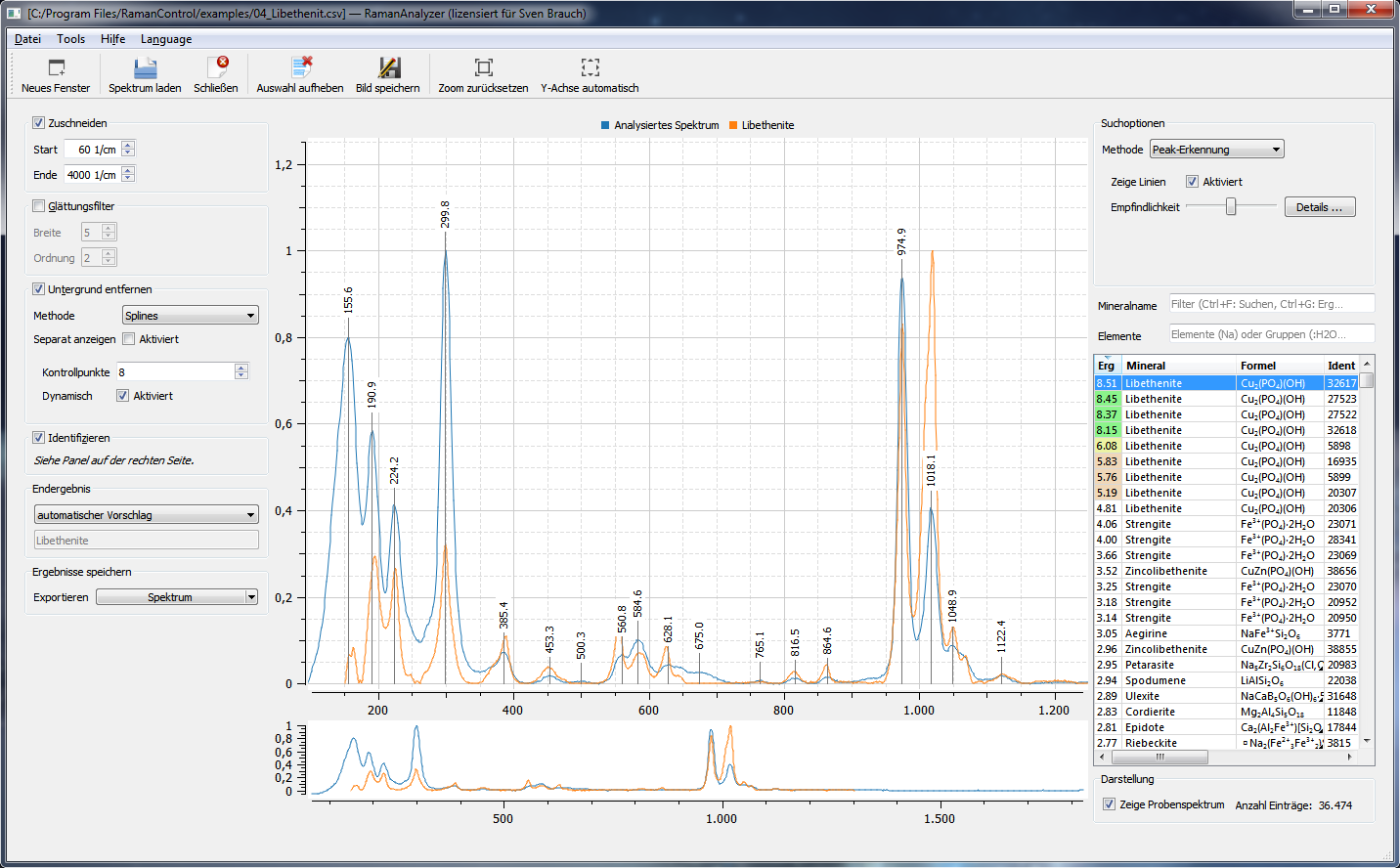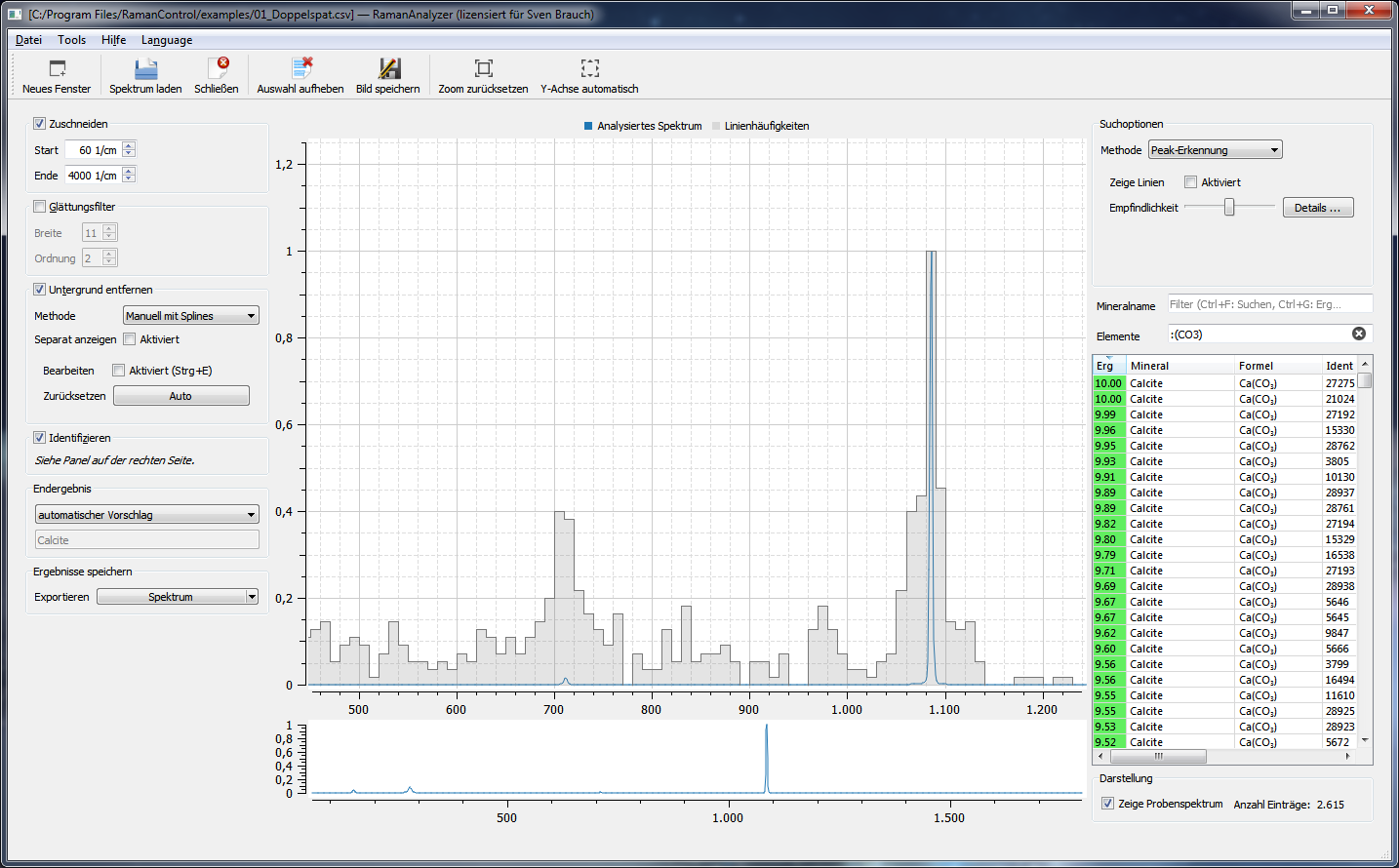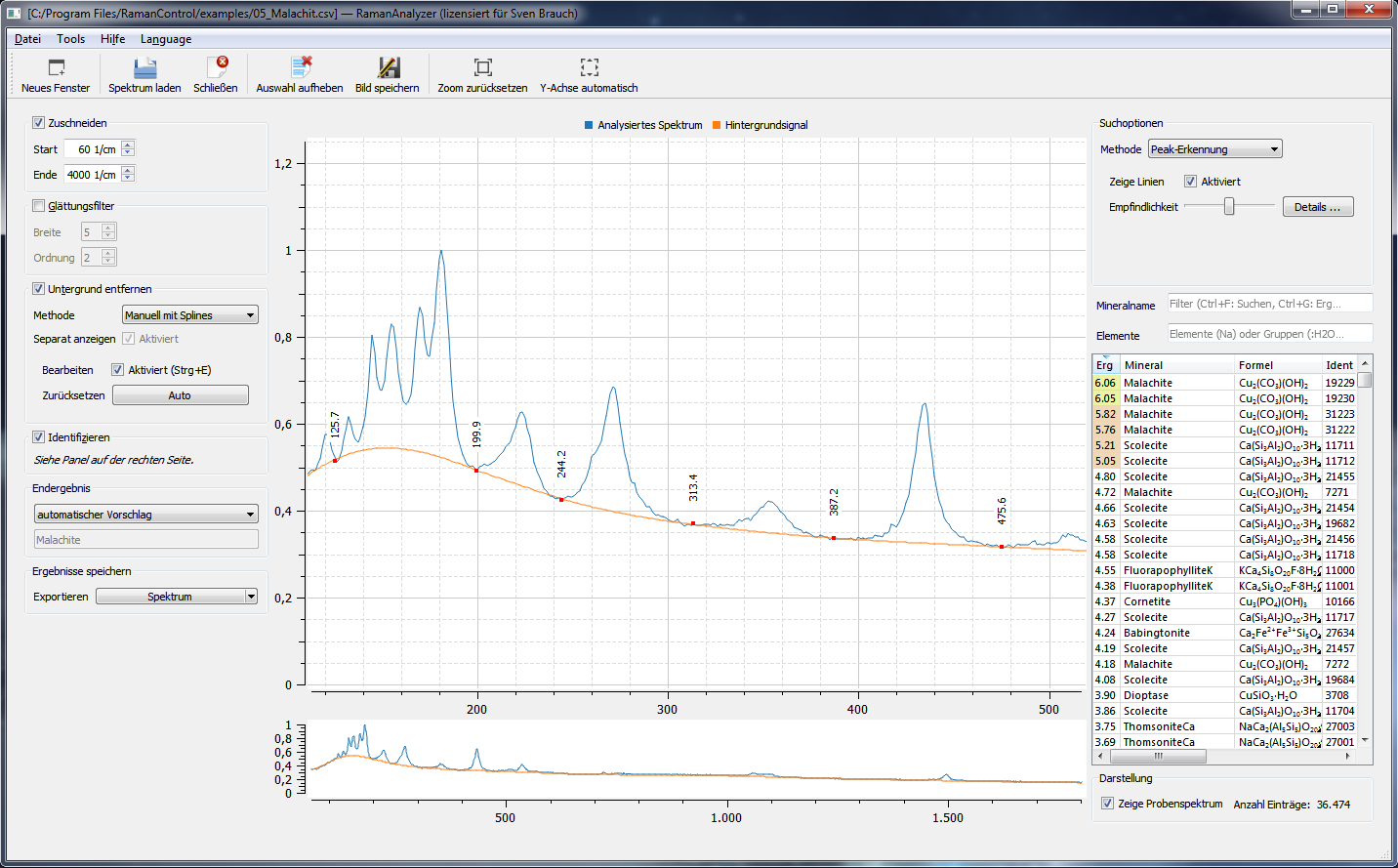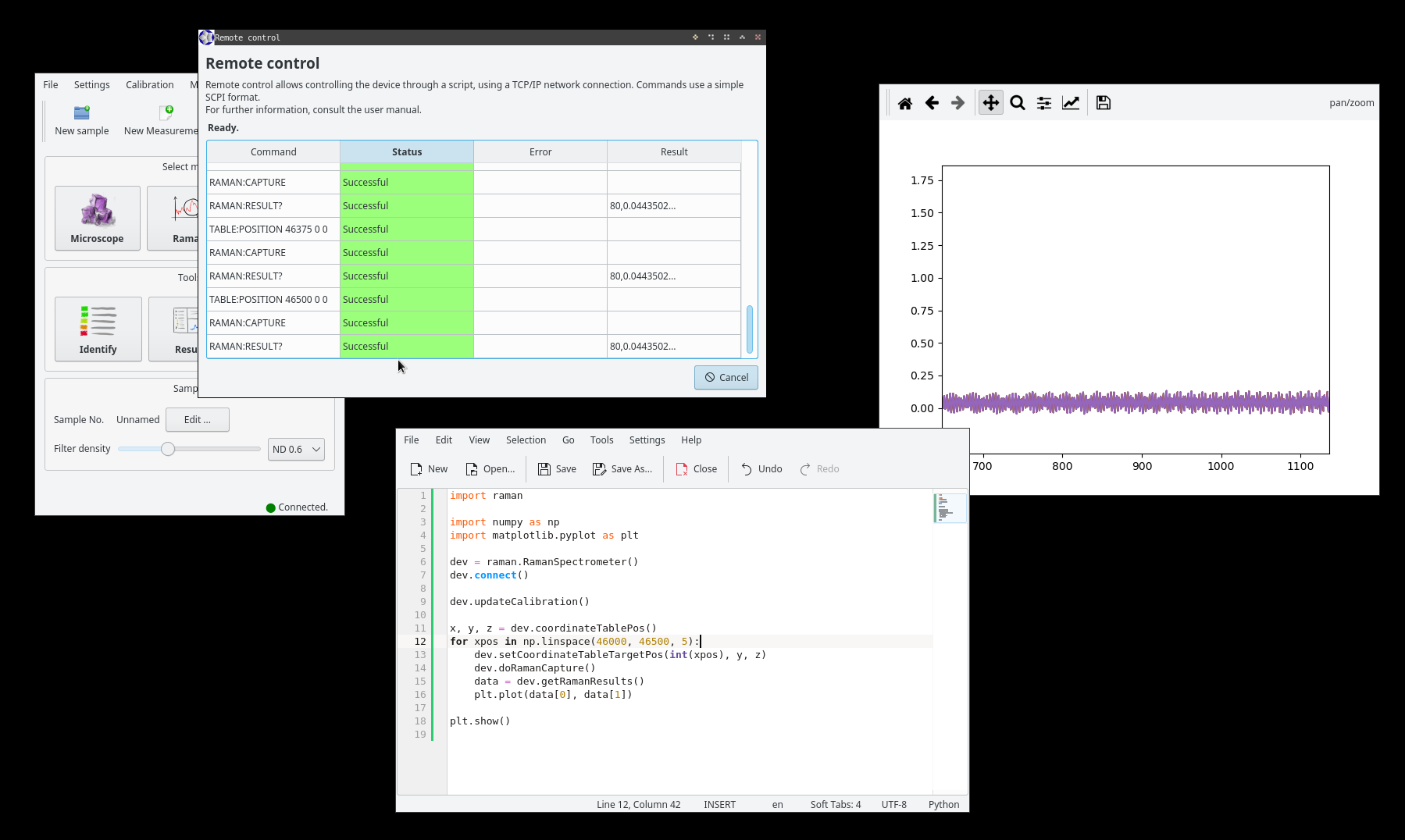Our Raman analytics software module offers modern, fast algorithms for processing and identifying Raman spectra. It enables you to reliably identify a material among tens of thousands of possiblities, remove background flourescence light from your data, or search your database for a specific chemical element — all in fractions of a second.
This product is already included in the spectrometer operating software, and is available as a stand-alone application on the Downloads page.

Using a special fingerprinting method, the software finds and rates significant features in the analyzed spectrum. This can be used to reliably identify, for example, a spectrum of a mineral within just fractions of a second among thousands of database entries.
The method assigns a user-friendly result score ranging from 0 to 10, where 10 means perfect coincidence between the acquired spectrum and the databse entry.
As a reference, there is the possiblity to use the correlation method as known from other applications like CrystalSleuth.
Occasionally, it can happen that the acquired spectrum is created by a mixture of two materials. In this case, our unique linear combination search helps to find plausible candidates for the two constituents.
This software does not need a "Run search" button: all results are updated in fractions of a second with every change of any analysis parameter.
This allows a fast and convenient workflow and offers the chance to gain new insights while trying out different analysis variants.

The loaded database can also be used in different ways to gain information about the opened sample spectrum:

An algorithm based on cubic splines allows intelligent automatic or semi-automatic removal of signal components which can probably be accounted for by flourescence effects. This signal component, emitted by some analyzed samples, is not relevant to a Raman analysis and can be troublesome for both display as well as identification of the acquired data.
The automatic removal works very well in most cases; in complex cases, you have the option to adapt the algorithm's output to your needs by comfortably moving its control points around.
As an alternative, the Goldindec algorithm from [Liu et al. 2015] is also implemented.
The results can be exported in various ways:

An optional software module provides you with a SCPI compatible programming interface.
Most aspects of the device can be controlled using this interface. This enables you to create flexible measurement plans, and allows integration of the device with existing setups.
The program is available for current 64-bit Windows and Linux operating systems; a license, once acquired, is valid for both systems. Please note that we do not offer 32-bit compatible versions of this software, as the addressable memory per process is limited to 2 to 4 GB on these systems, which may not be sufficient for use of the software with a large Raman library.
Depending on the size of the database used, a computer with a sufficiently large amount of RAM is advisable; we recommend at least 8 GB, better 16 GB.
A fast quad-core CPU built in the recent years (e.g. Intel i7-7700HQ or comparable) guarantees real-time search and identification even for very large databases.
By clicking the library list while holding the Control key, you can easily compare multiple search results to each other.
The database can be filtered in various ways, for example by contained elements or functional groups, as well as by the material's name. It is possible to compute histograms over the spectral lines occuring in the search results, in order to find lines which are typical for the selected constituents.